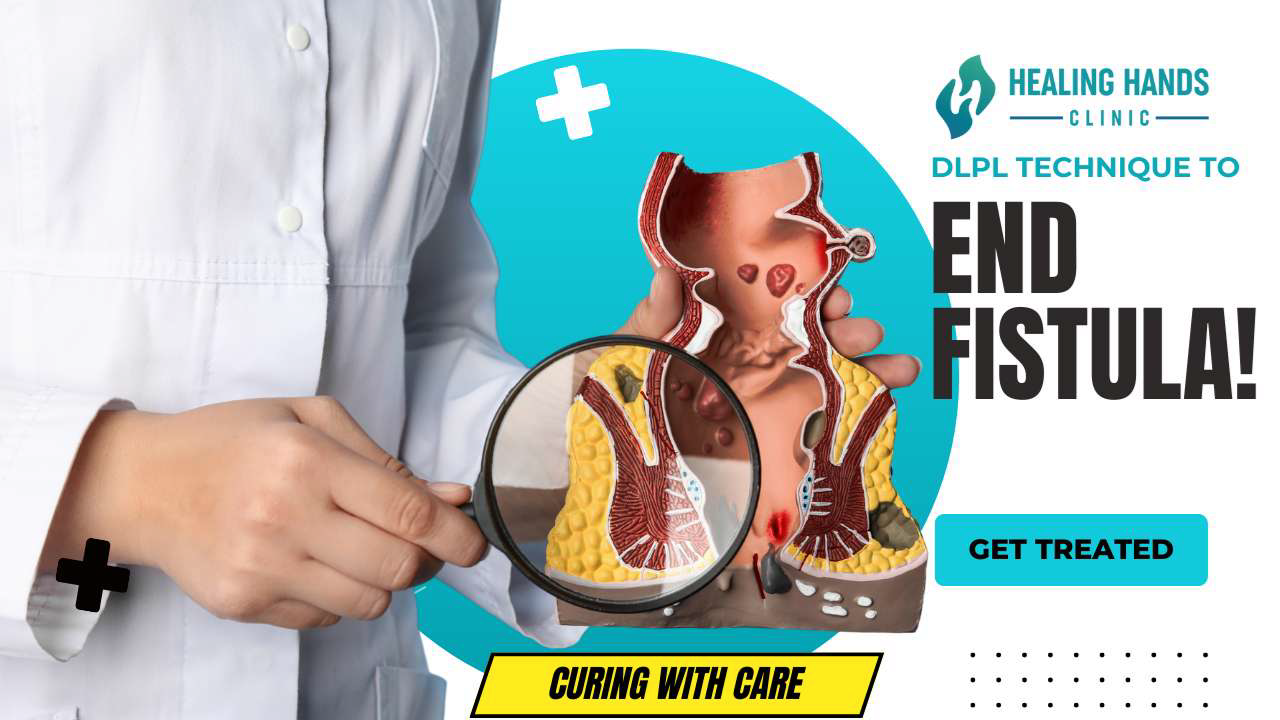Piles, medically termed hemorrhoids, affect countless individuals in Pune and across India, causing significant discomfort and impacting daily life. If you’re seeking effective piles treatment in Pune, you’re fortunate to be in a city with excellent medical infrastructure and access to experienced specialists. This comprehensive guide will help you understand treatment options, find the right medical care, and make informed decisions about your health.
Understanding Piles and Their Impact
Hemorrhoids are swollen blood vessels in the anal and rectal region that can develop internally within the rectum or externally under the skin around the anus. Internal piles typically cause painless bleeding during bowel movements, while external piles can be extremely painful, particularly when blood clots form within them. Common symptoms include rectal bleeding, itching and irritation around the anal area, pain and discomfort while sitting, visible swelling around the anus, and a sensation of incomplete bowel evacuation. These symptoms can significantly affect quality of life, work productivity, and personal relationships, making proper treatment essential.
Modern Treatment Options in Pune
Pune’s medical landscape offers comprehensive treatment options ranging from conservative management to advanced surgical interventions.
Conservative Management
For early-stage piles, treatment often begins with lifestyle modifications including dietary changes to increase fiber intake, adequate hydration to soften stools, regular physical activity to improve circulation, and establishing proper toilet habits to reduce straining. Medical therapy includes topical creams and ointments for symptom relief, oral medications to reduce inflammation and improve vein tone, stool softeners to prevent constipation, and prescription medications like flavonoids for more severe symptoms.
Minimally Invasive Procedures
Pune’s medical facilities offer several office-based procedures that provide effective relief with minimal downtime:
Laser Hemorrhoidoplasty : Advanced laser technology provides precise treatment with minimal tissue damage, reduced pain, and accelerated healing times.
Surgical Interventions
For severe or recurrent cases, surgical options include traditional hemorrhoidectomy for definitive removal, stapled hemorrhoidopexy using circular stapling devices for repositioning prolapsed hemorrhoids, and transanal hemorrhoidal dearterialization (THD) using Doppler-guided technology to selectively reduce blood flow.
Finding the Best Medical Care in Pune
When searching for the best hospital for piles and treatment in Pune, several factors deserve consideration. Pune boasts numerous reputable healthcare facilities equipped with modern technology and experienced medical professionals specializing in proctological conditions.
The best piles treatment in Pune combines expert medical care with state-of-the-art facilities and comprehensive post-treatment support. Leading hospitals in the city offer dedicated proctology departments with specialized equipment for both diagnosis and treatment.
Selecting the Right Specialist
Finding the best piles doctor in Pune requires evaluating several key factors. Look for board-certified proctologists with extensive experience treating hemorrhoids. The ideal piles specialist doctor in Pune should possess comprehensive training in the latest treatment techniques, maintain a track record of successful outcomes, demonstrate excellent communication skills, offer clear explanations of treatment options, and provide accessible follow-up care. When evaluating potential doctors, consider their educational credentials, years of specialized practice, patient testimonials and reviews, hospital affiliations and surgical privileges, and approach to treatment planning and patient education.
Dr. Paresh Gandhi – Laser Treatments for Anorectal Disorders
At Healing Hands Clinic, excellence and innovation in healthcare find their embodiment in Dr. Paresh M Gandhi. Known for his unwavering dedication and meticulous approach, Dr. Gandhi has been instrumental in driving the clinic’s growth and reputation as a centre of excellence.
Dr. Chaitanya Shah – Best Piles Specialist in Pimpri-Chinchwad
At the forefront of Healing Hands Clinic in PCMC, Pune, Dr. Chaitanya Shah stands as a beacon of excellence in the field of proctology and general surgery. His passion for advancing medical care and his dedication to patient well-being have cemented his reputation as a skilled and compassionate surgeon.
Dr. Sagar K. Teli – Consultant Proctologist & General Surgeon in Chakan, Pune
At Healing Hands Clinic in Chakan (Pune), we’re proud to introduce Dr. Sagar K. Teli, a highly skilled and compassionate consultant proctologist and general surgeon. With over 5 years of dedicated experience, Dr. Sagar has made a mark in the field of proctology and general surgery, providing exceptional care to patients of all backgrounds.
Special Considerations for Women
Many women prefer consulting with female healthcare providers for intimate medical conditions. A ladies piles doctor in Pune can offer specialized care while understanding the unique concerns women face, particularly during pregnancy and the postpartum period when piles are especially common. Female specialists often provide enhanced understanding of hormonal factors affecting hemorrhoid development, experience with pregnancy-related hemorrhoids, sensitivity to privacy concerns, and a comfortable environment for discussing symptoms openly.
Dr. Leena Dhole – Consultant Female Proctologist in Pune at Healing Hands Clinic
Committed Proctologist & Compassionate Healer at Healing Hands Clinic Dr. Leena Dhole is a dedicated and meticulous proctologist known for her empathetic patient care and precise diagnosis. At Healing Hands Clinic, she plays a key role in delivering exceptional outcomes for patients suffering from anorectal disorders such as piles, fissures, and fistulas. Her calm and soft-spoken demeanor instantly puts patients at ease, creating a comforting environment for open communication and trust.
Dr. Rashmi Patki – Female Proctologist & Breast Specialist in Pune
Welcome to Healing Hands Clinic, where compassionate care meets expert medical treatment. Dr. Rashmi Patki stands out as one of our esteemed consultants, specializing in proctology and breast diseases. With her unique expertise, Dr. Patki offers comprehensive care for anorectal disorders and breast ailments.
Dr. Anuradha Jagtap – Consultant Lady Proctologist in Wanowrie, Pune
Dr. Anuradha Jagtap is a compassionate and skilled Proctologist who is making a remarkable impact in the field of minimally invasive surgical treatments for anorectal conditions. Known for her gentle demeanor and sincere approach, Dr. Jagtap brings both expertise and empathy to her practice. She is deeply committed to her patients’ well-being and strives to provide them with the best care possible at Healing Hands Clinic, located in Salunkhe Vihar, Wanowrie.
Healing Hands Clinic: Specialized Care in Pune
Among Pune’s healthcare facilities, Healing Hands Clinic has established itself as a specialized center for proctological conditions. The clinic focuses on providing comprehensive care for piles and related conditions, combining experienced medical professionals with modern treatment technologies. The clinic offers thorough diagnostic evaluations, personalized treatment planning, access to both minimally invasive and surgical options, and comprehensive post-treatment support. Their patient-centered approach emphasizes comfort, privacy, and optimal outcomes.
What to Expect During Treatment
Your treatment journey typically begins with a comprehensive consultation where your piles doctor in Pune will review your medical history, discuss symptoms in detail, and perform a physical examination. Diagnostic procedures may include digital rectal examination, anoscopy to visualize internal hemorrhoids, and in some cases, sigmoidoscopy to rule out other conditions. Based on the diagnosis, your doctor will recommend the most appropriate treatment approach. For mild cases, conservative management with lifestyle modifications and medications may suffice. Moderate to severe cases might require minimally invasive procedures or surgical intervention.
Recovery and Follow-Up Care
Recovery duration varies depending on the treatment method chosen. Minimally invasive procedures typically allow return to normal activities within a few days, while surgical interventions may require several weeks for complete healing.
Your healthcare provider will give detailed post-treatment instructions including dietary recommendations emphasizing high-fiber foods and adequate hydration, pain management strategies using prescribed medications and comfort measures, wound care guidelines for surgical patients, activity restrictions and guidelines for returning to work, and signs of complications requiring immediate medical attention
Cost Considerations and Insurance
Treatment in Pune costs vary significantly based on the hospital, doctor’s experience, and treatment method selected. Government and municipal hospitals offer more affordable options, while private facilities may charge premium rates but provide enhanced amenities and personalized care.
Most health insurance policies cover medically necessary piles treatment, though coverage details vary by provider and policy. It’s essential to verify your coverage before proceeding with treatment, as some procedures may require pre-authorization.
Conclusion
Pune offers excellent opportunities for effective piles treatment with access to experienced specialists, modern medical facilities, and comprehensive care options. Whether you need conservative management or advanced surgical intervention, the city’s healthcare infrastructure can provide appropriate solutions. The key to successful treatment lies in early intervention, choosing the right specialist, and following through with recommended care plans. Don’t let embarrassment prevent you from seeking the medical attention you need. With proper treatment from qualified professionals, you can find relief from piles and return to a comfortable, active lifestyle. Remember that the best piles doctor in Pune for you is one who makes you feel comfortable, clearly explains your options, has relevant experience, and provides comprehensive support throughout your treatment journey.


